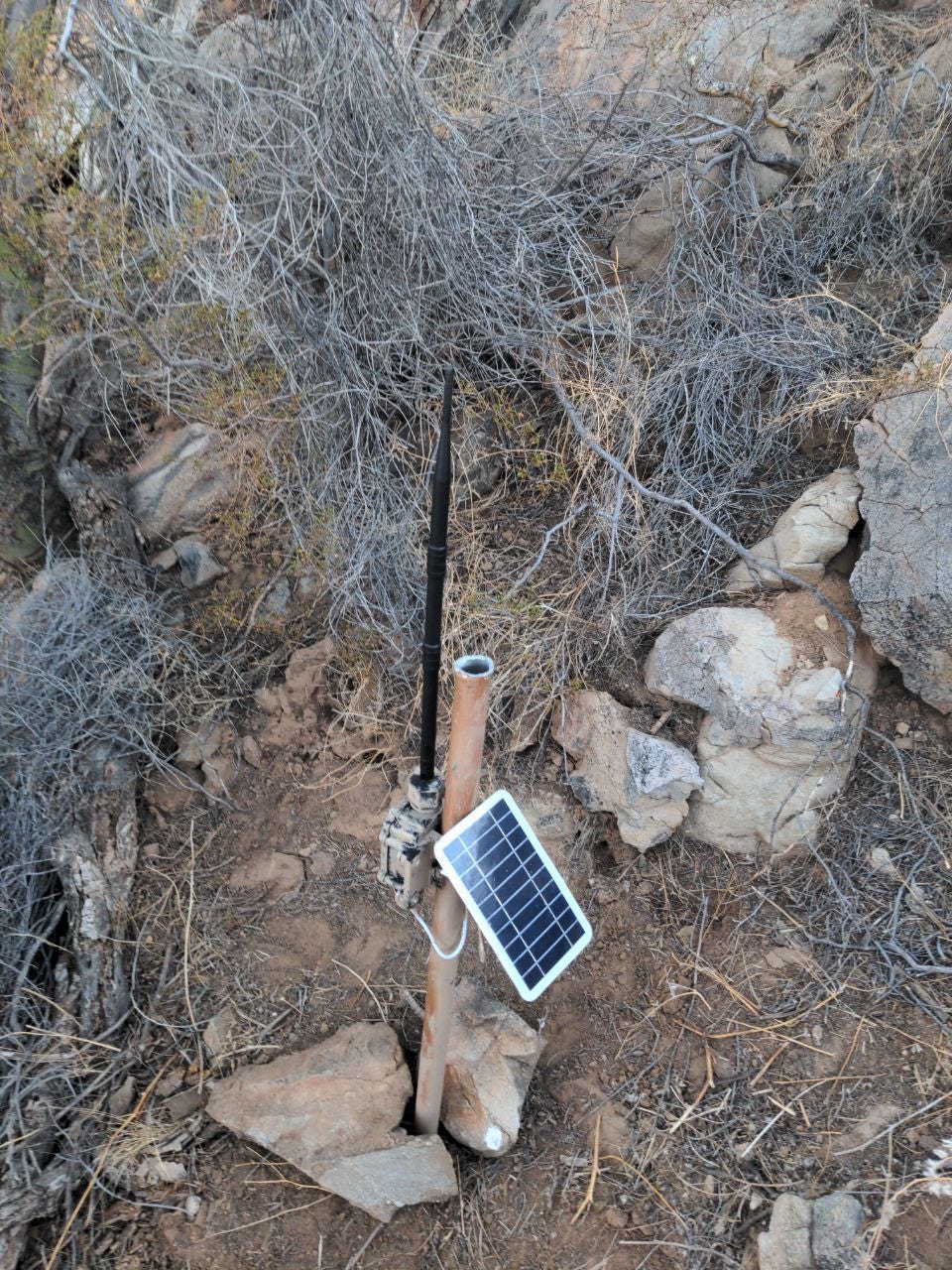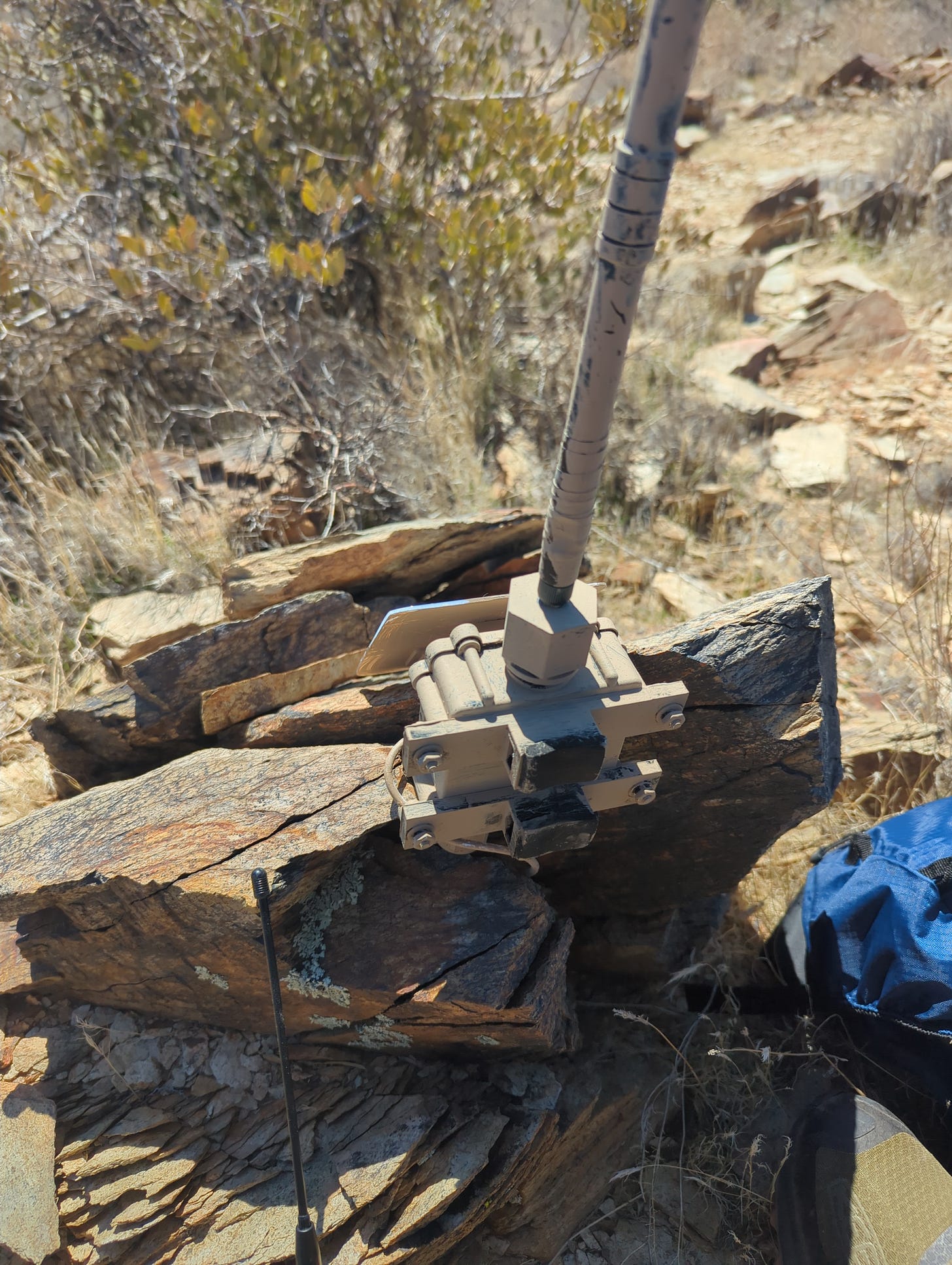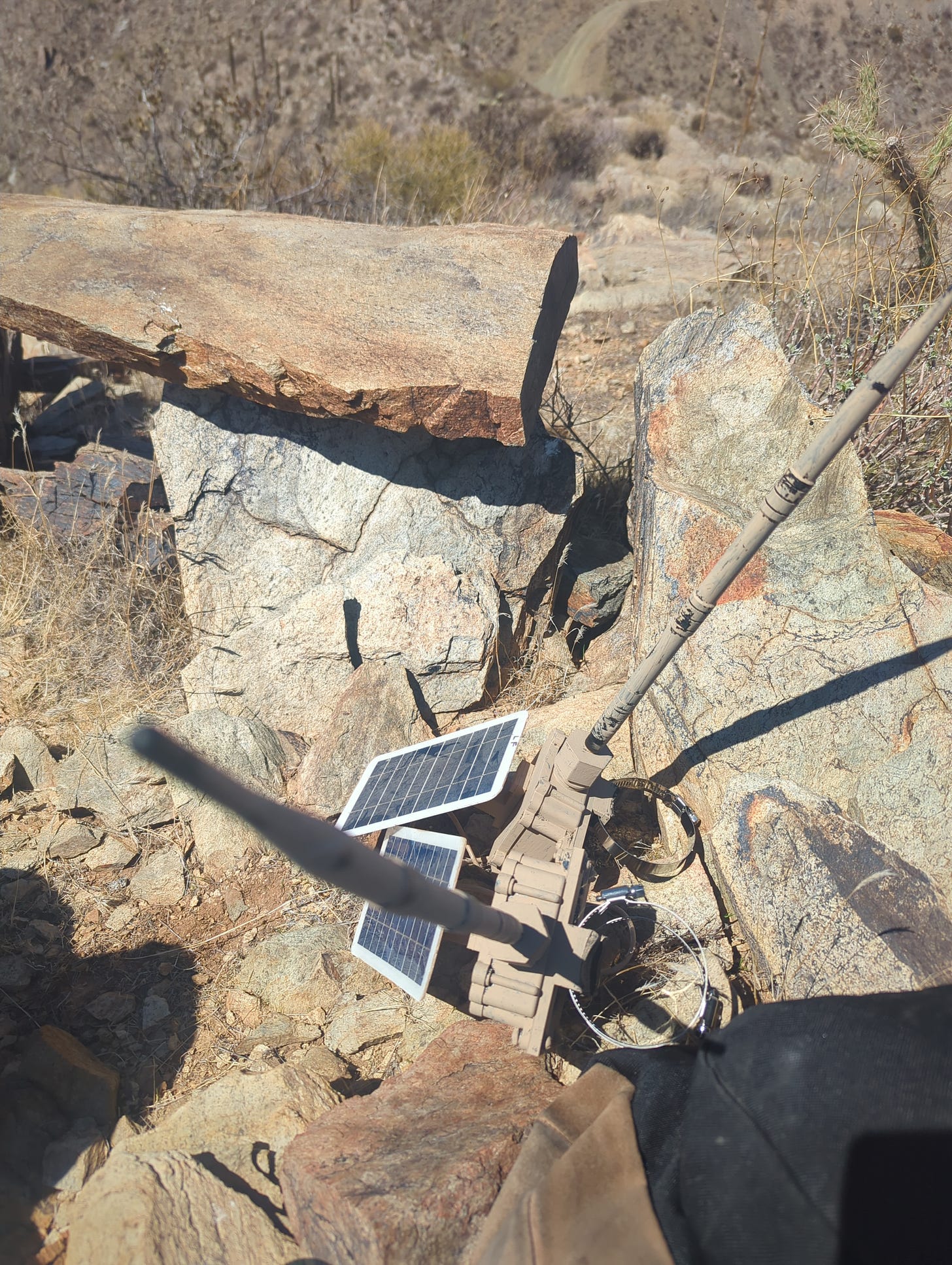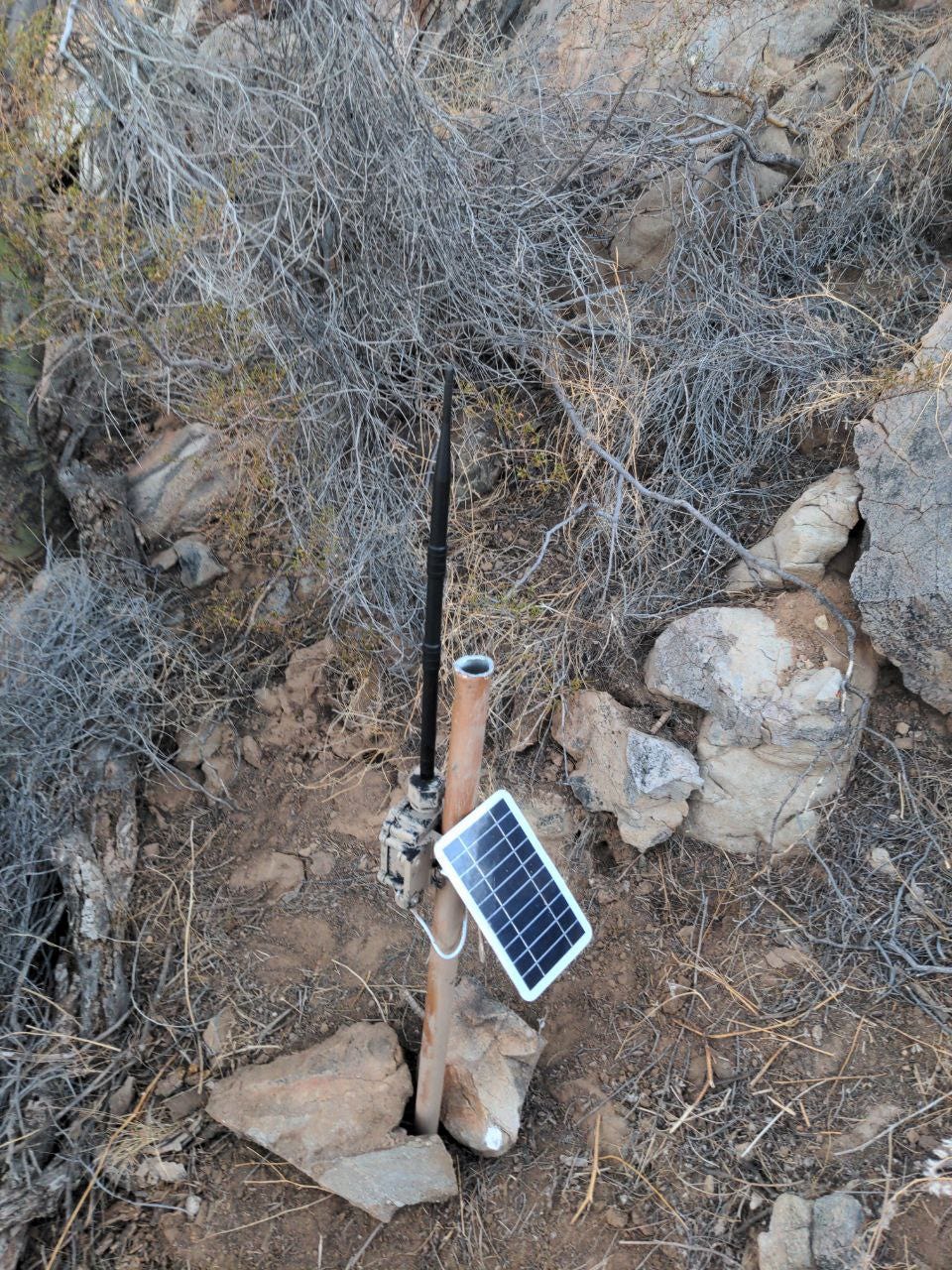Bush Deployment of Communications Equipment

Sometimes it is helpful to set up a radio repeater or other communications device at a remote location where you don’t want someone to find it. This requires placing it in the wilderness and painting it to match the landscape. This article will discuss remote deployment of communications equipment in the bush or stealth setting, where the equipment’s discovery is undesirable. The article will cover three aspects:
Types of Communication devices to deploy
Why deploy in the bush and how to do it
Recent Deployments of my own (will include pictures)
Types of Communication Equipment for Bush or Stealth Deployment
Two types of communications devices I would consider deploying in the bush are a cross-band repeater (or other radio repeaters) and meshtastic nodes. I believe these two types of technology can be used to make your own independent, off-grid communications network for both emergency and everyday use. You are welcome to dream up your solutions to meet your needs, but these two types cover voice and text-based communications.
Cross Band Repeaters
Radios capable of cross-band repeating receive radio transmissions on one frequency band, such as 2 meters, and retransmit on another like 70 cm. They can be placed inside ammo cans, pelican cases, or 3d printed cases with batteries and solar charge controllers. Then, they can be painted to match any landscape and placed on a surrounding hill or mountain top, with a solar panel and antenna. Their footprint is relatively small. This video has a brief overview of a simple cross-band repeater.
When looking for a place on publicly accessible land, look for a location that has foliage and is difficult to access on foot. Be sure the stealth location will have line-of-sight to the location from which you plan to operate. Hide it from plain sight as best as possible. To a casual observer, the radio equipment should blend into the landscape.
Test the signal quality at the bush location and make the needed adjustments for signal quality and strength. Choose the type of radio and band to use based on terrain, distance, and whether or not an amateur radio license is required to use it. Budget considerations may also be criteria that affect your choice. Check out this video from the Tech Prepper for additional ideas to consider.
https://www.youtube.com/watch?v=08pTbFmijUI
Mesh Nodes
Meshtastic devices provide low-power, encrypted, off-grid text-based communication. They do not require a license to operate when using the non-Ham mesh nodes (900MHz). Their size is small enough to deploy anywhere. Hilltop and mountaintop locations are best for deployment. Meshtastic nodes powered by a small internal battery and a small solar panel can be placed on a pole planted in the ground or they can be attached to the branch of a tree. Painting them to match the surrounding landscape in their stealth setting makes it more difficult to identify them. Look for a location that is difficult to access on foot. The location should be high enough to have line-of-sight with other nodes. Be sure there is foliage to help camouflage the node(s). Test the equipment before permanent installation. If enough nodes are deployed around an area, an entire text-based network can be made. Multiple nodes on multiple router client settings on multiple slot frequencies will give users multiple options for sending messages. These settings are critical for handling large amounts of traffic so be sure to test out multiple settings ahead of time to determine what is needed.
Why Deploy Communications Equipment in the Bush
I can think of many reasons to deploy in the bush. First, having a backup communications infrastructure when other forms of communication fail, ensures I can still communicate with others. Second, commercial radio sites are expensive to rent. Certain areas are sparsely populated with radio tower sites. Furthermore, commercial sites may not have off-grid power sources and could be targeted by bad actors or seized by the government under certain circumstances. Last, cell phone coverage in rural and remote areas may not exist. Whether camping, hiking, hunting, or fishing in the wilderness, a network of hilltop mesh nodes or a cross-band repeater can provide communication infrastructure where no other exists.
Recent Deployments
Not too long ago, a friend and I went somewhere to deploy some mesh nodes out in the bush. I can’t disclose the location because we don't want them to be discovered, but let’s just say, there's a healthy mix of nodes around. Many of the nodes forming the network in the area are not in the bush. Some are at radio tower sites. Others have been deployed in the bush to help fill in some gaps. That’s all I can tell you. OPSEC!!
The pictures below will show the nodes and provide some ideas about deployment.


Stealth deployment can also happen in urban settings but when doing so, make sure the equipment is located somewhere that is very difficult to access if it is discovered. Get creative with it. Most people wouldn't know what they were looking at and may dismiss it in their heads as something else. I haven't deployed anything in an urban setting but wouldn't rule it out. I prefer bush settings at elevated positions, so long as those positions meet all of the criteria discussed earlier in this article.
I hope this article gives some ideas and insight about how to deploy communications devices out in the field. Until next time, stay prepared.
“Live Free, or Die Trying.”
As always, I hope you stay prepared. God Bless and thank you for reading.
Again, if you’d like to support my writing, please consider a donation of any amount by going to my Give, Send, Go page which can be found by clicking HERE.



